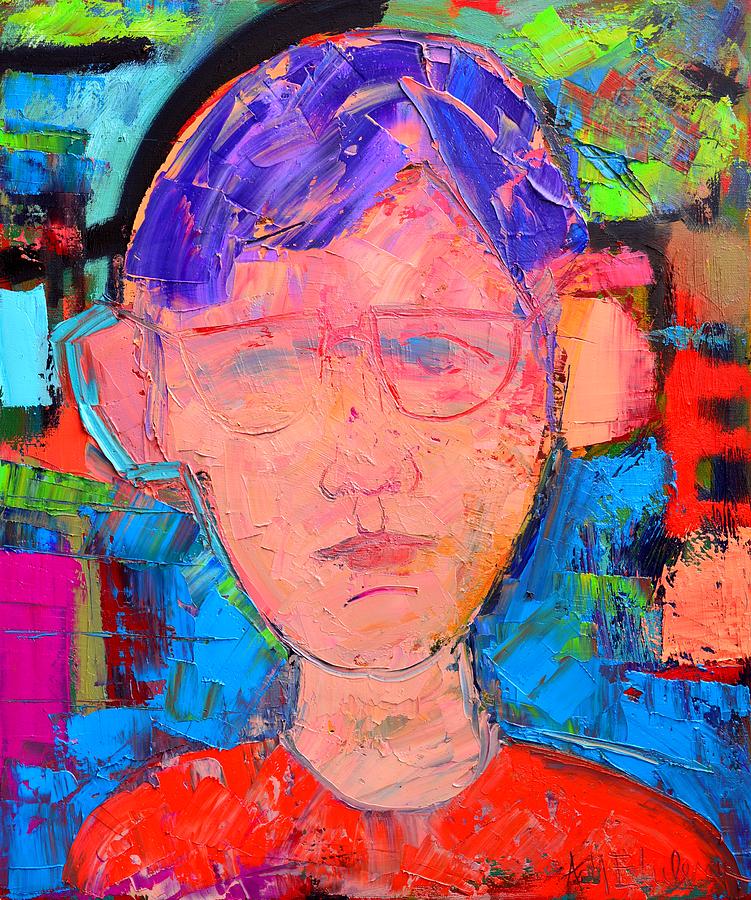

Yet all four artists are classified as abstract expressionists.Ībstract expressionism has many stylistic similarities to the Russian artists of the early 20th century such as Wassily Kandinsky.
#Abstract portraits series
California abstract expressionist Jay Meuser, who typically painted in the non-objective style, wrote about his painting Mare Nostrum, "It is far better to capture the glorious spirit of the sea than to paint all of its tiny ripples." Pollock's energetic " action paintings", with their "busy" feel, are different, both technically and aesthetically, from the violent and grotesque Women series of Willem de Kooning's figurative paintings and the rectangles of color in Rothko's Color Field paintings (which are not what would usually be called expressionist, and which Rothko denied were abstract).

In practice, the term is applied to any number of artists working (mostly) in New York who had quite different styles, and even to work that is neither especially abstract nor expressionist. Additionally, it has an image of being rebellious, anarchic, highly idiosyncratic and, some feel, nihilistic. The movement's name is derived from the combination of the emotional intensity and self-denial of the German Expressionists with the anti-figurative aesthetic of the European abstract schools such as Futurism, the Bauhaus, and Synthetic Cubism. Another important early manifestation of what came to be abstract expressionism is the work of American Northwest artist Mark Tobey, especially his "white writing" canvases, which, though generally not large in scale, anticipate the "all-over" look of Pollock's drip paintings. Robert Motherwell is mentioned with a question mark.

Around 1944 Barnett Newman tried to explain America's newest art movement and included a list of "the men in the new movement." Paalen is mentioned twice other artists mentioned are Gottlieb, Rothko, Pollock, Hofmann, Baziotes, Gorky and others. His long essay Totem Art (1943) had considerable influence on such artists as Martha Graham, Isamu Noguchi, Pollock, Mark Rothko and Barnett Newman. Paalen considered ideas of quantum mechanics, as well as idiosyncratic interpretations of the totemic vision and the spatial structure of native-Indian painting from British Columbia and prepared the ground for the new spatial vision of the young American abstracts. The newer research tends to put the exile-surrealist Wolfgang Paalen in the position of the artist and theoretician who fostered the theory of the viewer-dependent possibility space through his paintings and his magazine DYN. Jackson Pollock's dripping paint onto a canvas laid on the floor is a technique that has its roots in the work of André Masson, Max Ernst, and David Alfaro Siqueiros. Technically, an important predecessor is surrealism, with its emphasis on spontaneous, automatic, or subconscious creation. David Smith was one of the most influential American sculptors of the 20th century.

ĭavid Smith, Cubi VI (1963), Israel Museum, Jerusalem. In the United States, Alfred Barr was the first to use this term in 1929 in relation to works by Wassily Kandinsky. It was the first specifically American movement to achieve international influence and put New York at the center of the Western art world, a role formerly filled by Paris.Īlthough the term "abstract expressionism" was first applied to American art in 1946 by the art critic Robert Coates, it had been first used in Germany in 1919 in the magazine Der Sturm, regarding German Expressionism. United States, specifically New York CityĬlyfford Still, Jackson Pollock, Willem de Kooning, Arshile Gorky, Mark Rothko, Lee Krasner, Robert Motherwell, Franz Kline, Adolph Gottlieb, David Smith, Hans Hofmann, Joan MitchellĪbstract expressionism is a post–World War II art movement in American painting, developed in New York City in the 1940s. Not to be confused with Abstract art, Abstract impressionism, or Expressionism.


 0 kommentar(er)
0 kommentar(er)
